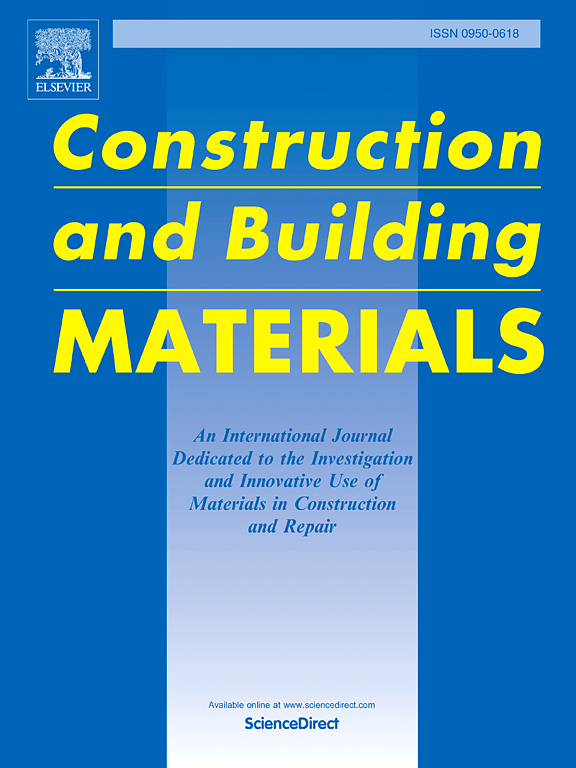揭示煅烧粘土基水泥流变挑战背后的机制
IF 8
1区 工程技术
Q1 CONSTRUCTION & BUILDING TECHNOLOGY
引用次数: 0
摘要
煅烧粘土被认为是一种可行的水泥替代品,可以替代石灰石煅烧粘土水泥(LC3)等低碳粘合剂。然而,其对可加工性的影响尚不清楚。本研究探讨了引起粘土基煅烧混合料流变问题的机制。LC3由两种化学性质相似但比表面积不同的煅烧粘土配制而成。差示扫描量热法(DSC)和时域核磁共振(1H TD‐NMR)测量了不同水固比下的自由水,同时对膏体和砂浆流变进行了评估和建模。结果显示,内部比孔容(0.108 cm³/g vs. 0.055 cm³/g)存在显著差异,这与不同的吸水率(30 % vs. 15 %混合水)相对应,使屈服应力从106 Pa增加到163 Pa,高效减水剂需求从1.2 %增加到1.3 %。建立的表观屈服应力(YODEL)估算模型明确了吸水在大幅增加膏体屈服应力中的作用。本文章由计算机程序翻译,如有差异,请以英文原文为准。
Disclosing the mechanism behind rheological challenges in calcined clay-based cements
Calcined clay is gaining recognition as a viable cement substitute for producing low-carbon binders like limestone calcined clay cement (LC3). However, its impact on workability remains unclear. This study investigates the mechanisms causing rheological issues in calcined clay-based mixes. LC3 was formulated with two calcined clays of similar chemistry but differing specific surface areas. Differential Scanning Calorimetry (DSC) and Time-Domain Nuclear Magnetic Resonance (1H TD‐NMR) measured free water at varying water-to-solid ratios, while paste and mortar rheology were evaluated and modeled. Results reveal significant differences in internal specific pore volume (0.108 cm³/g vs. 0.055 cm³/g), corresponding to varying water absorption (30 % vs. 15 % of mixing water), which increased yield stress from 106 Pa to 163 Pa and superplasticizer demand from 1.2 % to 1.3 %. A model to estimate the apparent yield tress (YODEL) clarified the role of water absorption in drastically increasing the yield stress of paste.
求助全文
通过发布文献求助,成功后即可免费获取论文全文。
去求助
来源期刊

Construction and Building Materials
工程技术-材料科学:综合
CiteScore
13.80
自引率
21.60%
发文量
3632
审稿时长
82 days
期刊介绍:
Construction and Building Materials offers an international platform for sharing innovative and original research and development in the realm of construction and building materials, along with their practical applications in new projects and repair practices. The journal publishes a diverse array of pioneering research and application papers, detailing laboratory investigations and, to a limited extent, numerical analyses or reports on full-scale projects. Multi-part papers are discouraged.
Additionally, Construction and Building Materials features comprehensive case studies and insightful review articles that contribute to new insights in the field. Our focus is on papers related to construction materials, excluding those on structural engineering, geotechnics, and unbound highway layers. Covered materials and technologies encompass cement, concrete reinforcement, bricks and mortars, additives, corrosion technology, ceramics, timber, steel, polymers, glass fibers, recycled materials, bamboo, rammed earth, non-conventional building materials, bituminous materials, and applications in railway materials.
 求助内容:
求助内容: 应助结果提醒方式:
应助结果提醒方式:


